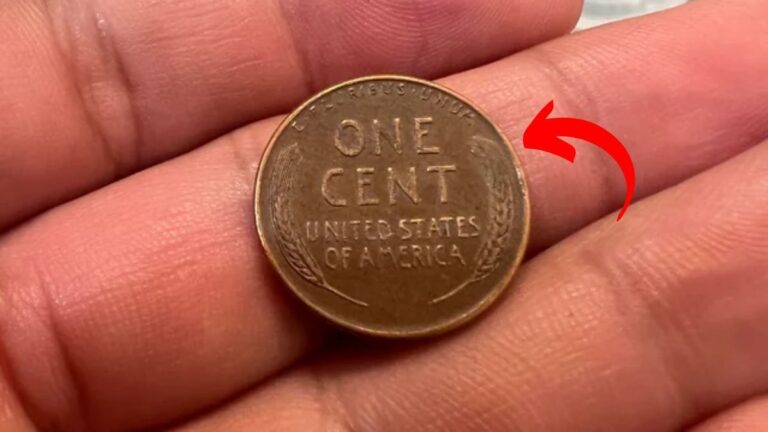That Penny in Your Pocket Might Be Worth a Fortune
Imagine digging through your old coin jar, flipping through dusty pennies, and suddenly realizing one of them could be worth more than your house—$7.2 million, to be exact. Sounds like a wild dream, right? But for coin collectors and lucky finders, it’s a very real possibility. One rare Lincoln Wheat Penny, still rumored to be in circulation, has stunned the numismatic world with its astronomical value—and it might just be sitting in someone’s change purse right now.
The History Behind the Lincoln Wheat Penny
The Lincoln Wheat Penny, first minted in 1909, was designed to commemorate Abraham Lincoln’s 100th birthday. It was the first U.S. coin to feature a real person’s face, a bold move at the time. With wheat stalks flanking the words “One Cent” on the reverse, these pennies were minted until 1958, when they were replaced by the Lincoln Memorial design.
But not all Wheat Pennies are created equal. While most are only worth a few cents over face value, some rare variations have shocked experts with their worth, especially those with minting errors or extremely limited releases.
So What Makes This Penny Worth $7.2 Million?
The penny in question is no ordinary copper coin. It’s believed to be a 1943-D Bronze Lincoln Wheat Penny, one of only a few ever accidentally struck in bronze instead of zinc-coated steel during World War II.
Here’s where it gets intriguing: in 1943, copper was reserved for wartime efforts, so pennies were supposed to be made from steel. But a few bronze planchets (coin blanks) somehow slipped through. These rare mistakes are now considered some of the most valuable coins in the world.
One such 1943-D Bronze Penny reportedly sold at auction for a jaw-dropping $1.7 million years ago—and today, it’s valued at over $7.2 million due to its rarity and skyrocketing demand among collectors.
Still in Circulation? That’s the Mystery
Here’s the kicker: experts believe at least one of these ultra-rare pennies is still out there, possibly in a coin collection, a piggy bank, or even in someone’s pocket change. Since these coins look remarkably similar to regular pennies, they can easily go unnoticed.
Could you be unknowingly spending a coin that’s worth a small fortune? It’s happened before—a man in Massachusetts unknowingly used a rare penny to pay for a coffee, only realizing the truth after a collector spotted it in circulation.
How to Spot the Million-Dollar Penny
Before you go emptying your change drawer, here’s what to look for: a 1943 penny that sticks to a magnet is made of steel—so it’s not the one. But if it doesn’t stick, you might have a bronze version on your hands. Look closely at the date, the mint mark (a tiny “D” under the year indicates Denver), and the overall color and weight of the coin.
Still unsure? Don’t guess—take it to a professional coin appraiser or dealer. They can tell you if you’re sitting on a gold mine disguised as copper.
Why These Pennies Matter More Than Ever
Beyond their value, these rare pennies tell a fascinating story of history, war, and human error. They’re a reminder that even in a mass-production world, accidents can become treasures. They bridge the past with the present, turning everyday objects into prized artifacts.
And who doesn’t love the idea of turning pocket change into millions?
A Penny for Your Thoughts—Or a Fortune in Your Hand
It’s easy to dismiss pennies as the most insignificant part of our currency. But every now and then, a single coin challenges that assumption—like the Lincoln Wheat Penny valued at $7.2 million. It’s not just a collector’s dream; it’s a symbol of how surprises can be hiding in plain sight.
So the next time you’re handed change at the store or cleaning out your drawers, take a closer look. You might just be holding onto a piece of history—and a fortune.
